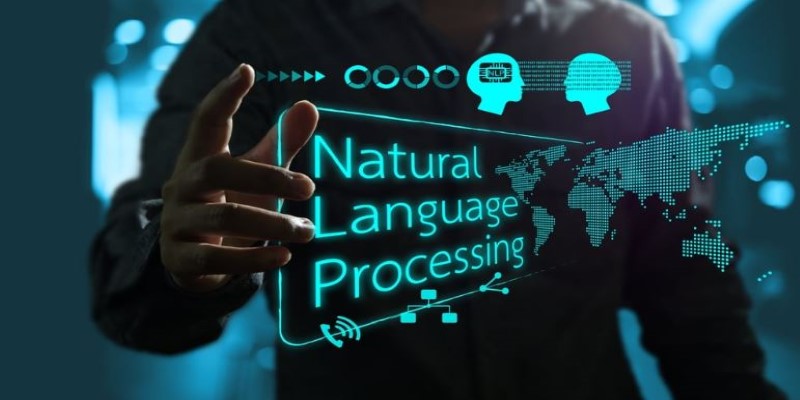The way computers understand human language has changed dramatically in recent years. What was once limited to rigid command-based inputs has evolved into intelligent systems capable of grasping context, sentiment, and even intent. This transformation is driven by Natural Language Processing techniques, the foundation of AI models that allow machines to communicate in a way that feels almost human.
Whether virtual assistants reply to questions, chatbots close customer queries, or search engines refine responses, NLP methods are at the heart of current artificial intelligence. Understanding these techniques gives insight into how machines process, analyze, and generate human language, reshaping the digital world we interact with every day.
Fundamentals of Natural Language Processing
At its core, Natural Language Processing methodologies close the gap between human language and machine understanding. As opposed to programming languages that are based on formal syntax, human communication abounds in nuances, uncertainty, and variability. NLP responds by merging linguistics, computational algorithms, and machine learning in NLP to interpret text and speech.
The process starts with text preprocessing, where raw input is cleaned, standardized, and normalized for analysis. This includes dividing sentences into tokens (words or phrases), discarding unnecessary material such as punctuation, and normalizing by converting words to lowercase or spell-checking. Stemming and lemmatization are other important process that brings words down to the root form, allowing algorithms to identify variations of the same term.
After preprocessing, semantic analysis enables meaning to be derived from words and phrases. Old NLP models depended on rule-based methods, whereby predetermined patterns guided the relationships between words. Yet, such techniques frequently lacked a good sense of context. Today's advances in machine learning for NLP now enable AI programs to grasp language with more flexibility through statistical models and deep learning, interpreting words within their text context.
Key Techniques in Natural Language Processing
One of the most significant Natural Language Processing methods is part-of-speech (POS) tagging, which includes giving grammatical tags to the words in a sentence. This helps AI differentiate between nouns, verbs, adjectives, and other parts of speech, making it possible to extract meaning from a statement accurately. Named entity recognition (NER) goes a step further by identifying specific entities within text, such as names of people, places, or organizations. This technique is widely used in search engines and automated content categorization.

Another critical component is sentiment analysis, a method that determines the emotional tone behind the text. Businesses rely on this technique to analyze customer feedback, monitor brand sentiment on social media, and enhance user experiences. By leveraging machine learning in NLP, sentiment analysis can classify text as positive, negative, or neutral, allowing companies to make data-driven decisions based on public perception.
Text summarization is another essential NLP technique. It enables AI to generate concise versions of lengthy content while retaining the most important information. This is especially useful for news aggregation platforms, document analysis, and AI-driven research tools. Extractive summarization selects key sentences from the original text, whereas abstractive summarization creates new sentences that capture the main ideas. Both approaches contribute to more efficient information processing in various industries.
How NLP Advances with Machine Learning?
Traditional NLP systems relied on predefined rules, but machine learning in NLP has drastically improved their capabilities. Instead of depending on manual rule-setting, modern NLP models use large datasets to learn language patterns on their own. Supervised learning methods train models on labeled data, enabling them to classify text, translate languages, and recognize speech with increasing accuracy.
One of the most groundbreaking advancements is the rise of transformer models, such as OpenAI’s GPT series and Google’s BERT. These models use attention mechanisms to analyze words in relation to their surrounding context, improving translation accuracy, chatbot interactions, and text generation. Unlike earlier models that processed text sequentially, transformers allow AI to understand entire sentences at once, making responses more coherent and contextually relevant.
The integration of deep learning has further refined NLP by enabling speech recognition and conversational AI to function with human-like fluidity. Virtual assistants like Siri and Alexa rely on deep learning algorithms to process spoken commands, respond in natural language, and continuously learn from user interactions. This evolution has expanded NLP’s applications beyond text-based systems, making voice-driven AI an essential part of modern technology.
The Future of NLP and Its Impact on AI
As NLP continues to evolve, its applications will only become more sophisticated. The rise of large language models has already demonstrated AI’s ability to generate human-like responses, summarize complex texts, and even assist in creative writing. However, challenges remain, particularly in addressing bias in AI models, ensuring ethical language processing, and improving multilingual capabilities.

One of the most promising areas of development is zero-shot learning, where AI can understand and generate responses for new topics without prior training. This innovation reduces the need for massive labeled datasets and enhances the adaptability of NLP models across different languages and contexts. Additionally, advancements in real-time translation will make cross-language communication more seamless, further breaking down barriers between people worldwide.
While Natural Language Processing techniques have already transformed AI, the future holds even greater possibilities. As researchers refine models to better understand intent, sarcasm, and cultural differences, the dream of fully human-like AI communication moves closer to reality. Whether in customer service, healthcare, or creative industries, NLP will remain a driving force behind the next generation of AI-powered solutions.
Conclusion
Natural Language Processing techniques have revolutionized the way machines interact with human language, making AI more intuitive and responsive. By leveraging machine learning in NLP, systems can analyze context, detect sentiment, and generate meaningful responses. From virtual assistants to real-time translations, NLP is shaping the future of communication. As technology advances, AI will become even more fluent, bridging language barriers and enhancing human-computer interactions. The journey of NLP isn’t just about understanding words—it’s about creating AI that truly understands us.
